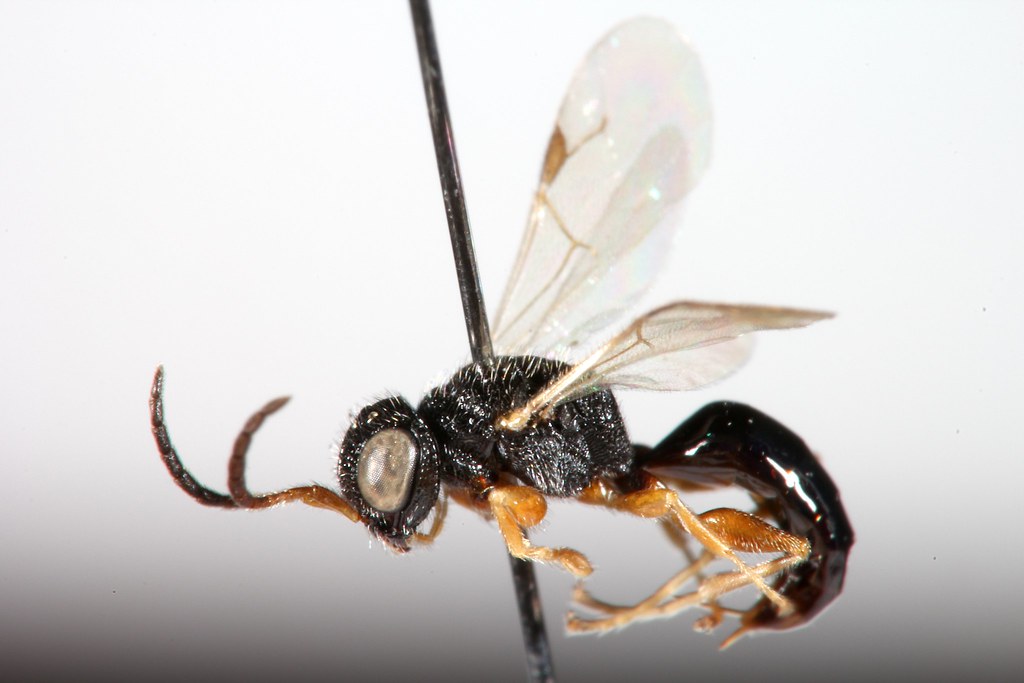Introducing Muhaka icipe: A new, bizzare wasp discovered in Kenya
Nairobi, Kenya, 2 July 2015: icipe taxonomists in collaboration with colleagues at the Smithsonian Institution, USA, have discovered a new, enigmatic wasp genus and species in Muhaka forest on the south coast of Kenya.
In a paper published in the recent issue of the Journal of Natural History, the unusual wasp has been named Muhaka icipe – a double tribute, first to the forest, which is one of the sacred Mijikenda Kayas, and second, to icipe’s role in advancing knowledge of Africa’s remarkable insects. For years, icipe has maintained a field station in Muhaka, which supports survey and inventory studies in coastal habitats, including Muhaka forest and other Kayas that are spread out over some 200 km along the Kenyan coast.Muhaka icipe was discovered during one such survey.
“Muhaka icipe, a tiny wasp, less than 2 mm long, clearly belongs to a subfamily of wasps referred to as the Eucoilinae. Specifically, it belongs in the “wedge-head-syndrome” group of wasp species, known only from the Afrotropical region. However, the distinctive and bizarre head ornamentation of Muhaka icipe required the establishment of a new genus in which to place this remarkable species,” explains icipe scientist, Dr Robert Copeland.
He adds: “We hope that the discovery of species such as Muhaka icipe will help build a case for effective conservation strategies to safeguard the East African coastal forests, one of only eight biodiversity hotspots recognised in Africa by Conservation International. Together, the coastal forests provide unique habitats for numerous endangered animal and plant species, including many found nowhere else in the world.”
“The coastal forests face constant threats primarily related to factors associated with increased human population pressure. For instance, the Kayas, which historically protected the Mijikenda people against invaders, and which continue to have strong religious and cultural uses, have traditionally been protected by village elders from encroachment and destruction. However, in recent years, illegal tree felling has been detected in some of them, including Muhaka. Tree poaching is a real and immediate threat to the continued existence of these small forest patches,” concludes Dr Copeland.
Notes for Editors
What’s in a name? The case for taxonomy
From time immemorial, human beings have maintained a complex system of oral communication, with the naming of things as a central component. Taxonomy, defined as the science of naming, builds on this age-old human tradition. It facilitates the description and classification of organisms – from plants, animals and microorganisms – in an ordered system intended to indicate natural relationships.
Taxonomists are guided by a set of rules to classify and describe organisms according to their genus and species. The term species refers to a group of living organisms that reflect a real biological difference from all other groups, and which can interbreed and produce viable offspring. A genus indicates a group of related species of animals or plants. They use morphological, behavioural, genetic and biochemical observations to categorise specimens, and they must counter-check a variety of taxonomic sources for previous classifications. If no matches are found, the specimens being studied are considered to represent a new species and are therefore given a new, unique name.
Taxonomists use the Binomial Naming System (two-name system), to come up with a ‘scientific’ name for each species, the genus name (always capitalized) coming first, followed by the species “epithet”. For example, for humans (Homo sapiens), the genus name is Homo and the species epithet is sapiens. The name and the description is then published according to scientific rules and standards, so that it becomes a unique universal identifier of the organism in question.
In the past 250 years, taxonomists have named about 1.75 million species of animals, plants and micro-organisms worldwide. However, globally there is still a huge gap in taxonomic knowledge, with recent scholarship estimating that the total number of species is about 8.7 million. Taxonomic knowledge is critical because it lies at the heart of two interrelated subjects: biodiversity, the maintenance of which ensures balance among species, and conservation strategies, which aim to protect biodiversity. Specifically, taxonomy guides the understanding of the complex interactions of the world’s biodiversity, providing the names necessary for discussion of, for example, where different living things fit within ecosystems, what they feed on, what is feeding on them, their impact on others, and what would happen if they disappeared.
But why should humans be concerned about biodiversity and its conservation? When a habitat is destroyed or radically altered (an overlogged forest, for example) species that depend on it may be lost. The uneven loss of species (i.e. the disappearance of species less likely to survive in the face of a changing environment) precipitates changes up and down the food chain, with the risk that the effectiveness of natural biological control of pest species by predators and parasites may be diminished or eliminated altogether. In agricultural environments (farmland) the consequences of an uneven loss of biodiversity on human food production may be grave. Simply stated,diversity ensures balance among species; conservation protects diversity.
At icipe, taxonomy is interlinked with the Centre’s mandate of conserving biodiversity. Since it was founded, icipe has discovered many interesting new species and provided insights into the geographical distribution of various insect groups, primarily Hymenoptera and Diptera. The Centre’s taxonomists have provided researchers working on Hymenoptera in Africa with desperately needed material for studying their diversity, abundance and phenology.
Research Details
- Publication: Buffington M.L. and Copeland R.S. (2015) Muhaka icipe, an enigmatic new genus and species of Kleidotomini (Hymenoptera: Figitidae: Eucoilinae) from an East African coastal forest Available at: http://www.tandfonline.com/doi/full/10.1080/00222933.2015.1042411#.VY0GThuqqko
- Funding: This research was partially funded by the United States Department of Agriculture (USDA) Systematic Entomology Laboratory.
- Corresponding author: Robert Copeland, Head, Biosystematics Unit, icipe, rcopeland@icipe.org
Media Contacts
- Liz Ng’ang’a, Communications Consultant, icipe, Lnganga@icipe.org
- Photos: https://www.flickr.com/photos/icipeinsects/19175425075/in/album-72157654206613622


